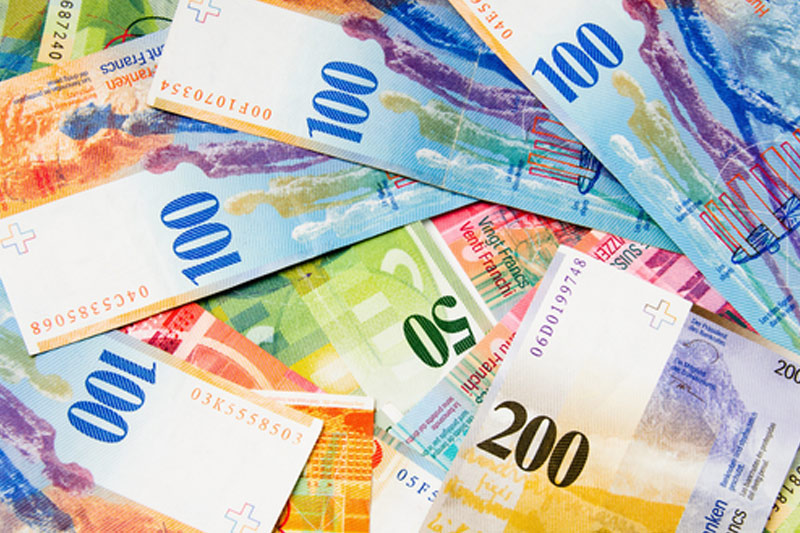Investing.com - The Swiss franc remained sharply higher against the dollar and the euro on Thursday after the Swiss National Bank abandoned its exchange rate cap against the single currency, which it introduced four years ago.
The SNB shocked markets on Thursday by scrapping the 1.20 per euro exchange rate floor it imposed in September 2011, in a bid to stave off deflation and prevent the continued appreciation of the safe-haven franc.
The central bank also cut rates to minus 0.75%, from minus 0.25% and lowered its target range for the three-month Libor to minus 1.25% to minus 0.25%, from minus 0.75% to 0.25%.
EUR/CHF hit lows of 0.7710 following the announcement, before pulling back to 1.0472, a drop of 12.74% for the day.
The euro was also sharply lower against the dollar. EUR/USD hit lows of 1.1580, the weakest since November 2003 before trimming losses to trade at 1.1623, still down 1.4% for the day.
“The euro has depreciated considerably against the U.S. dollar and this, in turn, has caused the Swiss franc to weaken against the U.S. dollar. In these circumstances, the SNB concluded that enforcing and maintaining the minimum exchange rate for the Swiss franc against the euro is no longer justified,” the central bank said in a statement.
"This exceptional and temporary measure protected the Swiss economy from serious harm. While the Swiss franc is still high, the overvaluation has decreased as a whole since the introduction of the minimum exchange rate."
The move indicated that the SNB sees a high likelihood that the European Central Bank will implement quantitative easing measures at its upcoming meeting next week.
The Swiss franc jumped to four-year highs against the dollar immediately following the announcement, with USD/CHF hitting lows of 0.7462, before trimming back losses to 0.8982, still down 11.79% on the day.
In the U.S., data on Thursday showed that the number of people who filed for unemployment assistance last week rose to a four-month high of 316,000, compared to expectations for a decline of 6,000.
A separate report showed that U.S. producer prices fell by the most in three years in December, falling 0.3% as energy costs tumbled.
The U.S. dollar index, which measures the greenback’s strength against a trade-weighted basket of six major currencies, was up 0.40% to 92.68, not far from the 12-year peaks of 92.76 scaled last week, supported by weakness in the euro.
